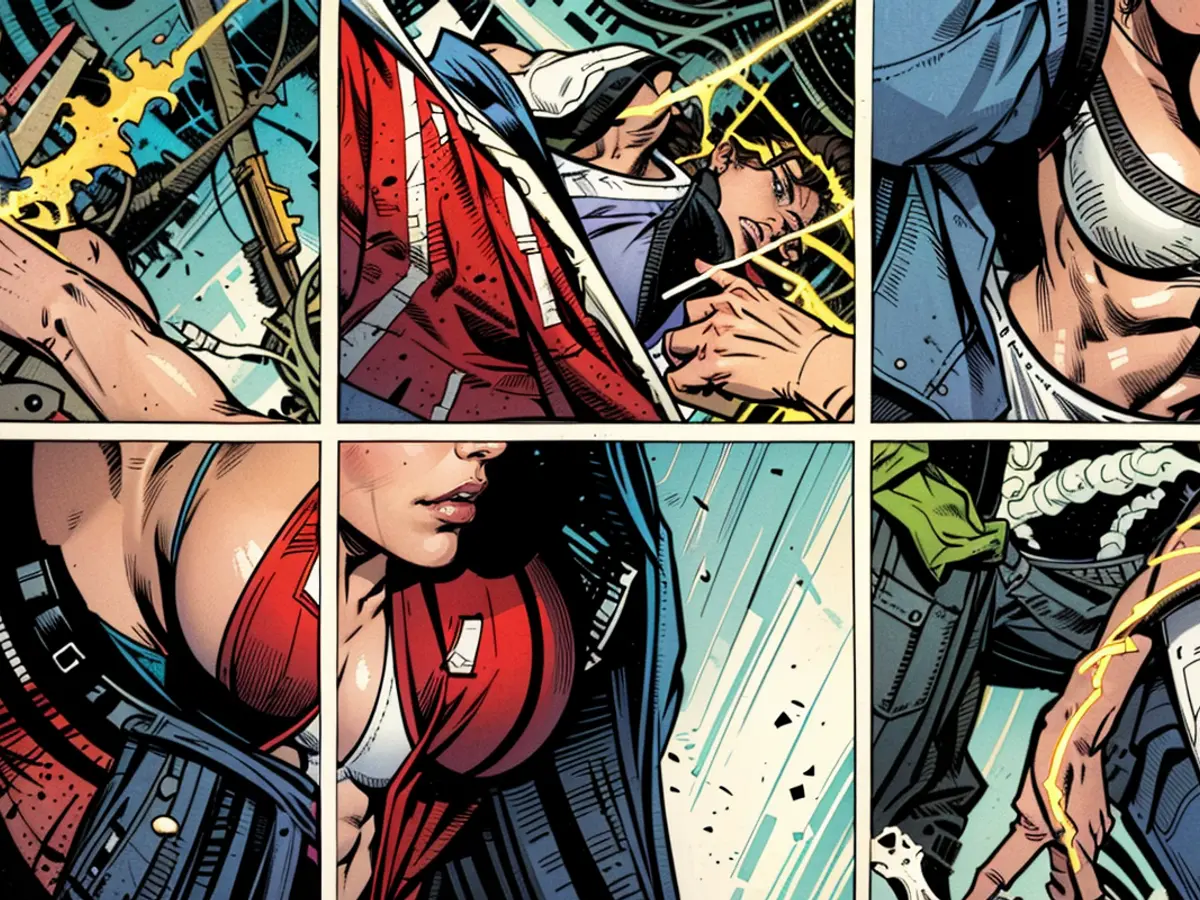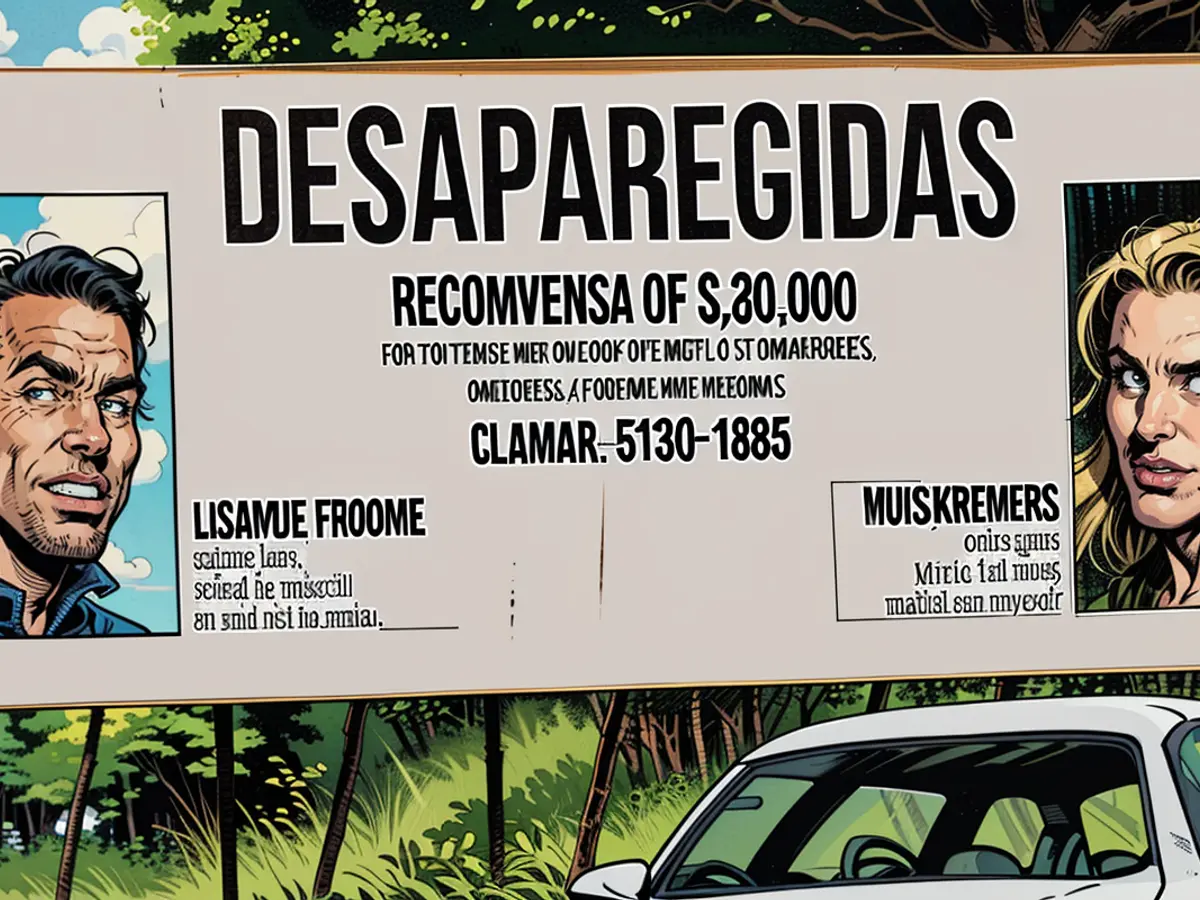Is Panama concealing the disappearance of two Dutch women?
In 2014, two young Dutch women embarked on an adventure in Panama, but they never returned home after a journey deep into the jungle. The Panamanian authorities have labeled it an accident, but a German duo is not so convinced.
A backpack, two cell phones, and a digital camera were discovered, along with only 13% of their skeletons. Lisanne Froon and Kris Kremers, two young women from the Netherlands, had planned to improve their Spanish and volunteer at a kindergarten in a small jungle town for a few weeks. There was nothing particularly unusual about their plans until they vanished after a hike. What's more, their camera shows many images of their excursion, and their cell phones reveal a phone record from that time. These hints raise more questions than answers.
It's been ten years since the disappearance of Froon and Kremers in the jungle of Boquete, Western Panama. The authorities consider their disappearance an accident, but the truth remains a mystery. The circumstances, evidence, and investigation itself are all unclear and inconsistent. People worldwide are speculating about various theories, from accidents to murders, kidnappings, human trafficking, and even paranormal phenomena. All these theories contest the official version of the Panamanian investigators.
That's what two authors and researcher duo Annette Nenner and Christian Hardinghaus did when they started from scratch. Their findings are now published in their book "Lost in Panama." Hardinghaus said in an interview: "The circumstances of the case are so mysterious that I knew something was being manipulated. I wanted to find out how close we could get to the truth." While the historian delved into the 2656-page-long investigation file, Nenner dug deeper by speaking to witnesses and suspects. She also explored the town of Boquete and the jungle where the women disappeared. Nenner describes one moment of the research as "chilling": "With the knowledge I have today, I'd never go there alone again."
The story begins with the two women, aged 22 (Froon) and 21 (Kremers), arriving in Panama. After their initial days of enjoyment, they head to the mountainous Boquete to do their volunteer work in a host family. However, there's a setback: the kindergarten cancels their service for unknown reasons, and they have to adapt quickly.

They soon found a hiking trip on the Pianista Trail, about eight kilometers long. A taxi transported them there, and he was the last person seen with them.
When the women failed to show up for a tour to an earth farm on April 2, 2014, everything moved swiftly. The authorities were notified, and Interpol was activated. Their 10-week search became the largest in Panamanian history, involving civil protection authorities and the air force. Six prosecutors were investigating the case, along with a reward from the parents of the missing and even the president. Still, all these efforts initially proved fruitless.
Until an indigenous couple discovered the women's backpack in a riverbed two months later, twelve kilometers away from the start of the trail. Inside are their cell phones, two bras, and $87 - along with the camera. Some of the photos seem normal, taken on April 1, where the two women smile at the camera. But from April 7 to 11, the camera records only the dense jungle with a few body parts or plastic bags on branches. Why the women took these photos and what they wanted to capture remains unclear.
Ultimately, the stunning discoveries accumulate: A few meters away from the backpack, Froon's shoe is discovered. In it lies a severed, skeletal foot. Later, a pair of jeans shorts and more bones are found. Some can be attributed to Froon, while others belong to Kremers. Then the findings of clues in the jungle abruptly cease, just like they started. Shortly afterwards, the official investigations are terminated. The two Dutch women are claimed to have died since they fell into a river, resulting in their deaths, according to the version of the authorities.

This notion isn't entirely far-fetched. Two young Dutch women in the heart of the jungle, unfamiliar with the area and without a tour guide. To make matters worse, they had scarcely any provisions. Froon had a slight fever and foot ailments. "Yet the evidence speaks against a simple accident," argues Hardinghaus. "The forensic findings by the Netherlands contradict the statement of the Panamanian authorities."
For instance, the backpack and found articles of clothing were unharmed. There were no bloodstains, and the bones seemed bleached. "Additionally, the phone behavior of the women doesn't align with the accident theory," Hardinghaus explains. Kremers and Froon allegedly tried in vain to make a call. Then the phones were switched on and off again for a brief period. It is assumed that they were both looking for a signal and trying to preserve the phone battery. Hardinghaus and Nenner had the data of the phones examined by an expert. The outcome: The few seconds of turning on the phone weren't enough time to search for a signal. "It seems like someone intentionally demonstrated that the phones were active but strongly desired to avoid the phones logging into the network."
There's rampant conjecture regarding the disappearance of Lisanne Froon and Kris Kremers. Perusing online forums and podcasts, countless individuals mention Feliciano Gonzalez, a renowned tour guide in the region. It's alleged that he was in cahoots with the Dutch women on the Erdbeer farm the day after their disappearance. People accusing him of being the perpetrator cite his local expertise. In addition, he reportedly searched for the women alone on the Pianista Trail the day after their disappearance, both in their guest room and on the Pianista Trail. According to the accusation, he was attempting to eradicate traces.
"For Feliciano and his family, this ordeal is gruesome," Nenner remarks. The journalist spent a considerable amount of time with the tour guide in Boquete and saw him as an "authentic and honest" individual. "We could expeditiously rule out Feliciano as the perpetrator," she continues. "Most importantly, because he was in Boquete on April 1, 2014, and this is documented in writing." He was not in that location during the disappearance. "Moreover, he is not cited as a suspect in the records."

The authors also arrive at the same conclusion regarding the primary crime theory. According to this, a local gang, named the Pandilla, was associated with the disappearance. The seven young men are said to have kidnapped, raped, and then killed the Dutch women. This theory predominantly relies on an American tabloid journalist whose podcast on the case has been downloaded 2.5 million times. The most significant piece of evidence is a photo that allegedly shows both gang members and Kremers and Froon bathing in a hot spring. However, the faces on the photo are not recognizable. It could potentially be Kremers and Froon - or not.
"They're not," Nenner concludes the outcome of their findings. So the author's research refutes the public accusations against non-convicted, possibly innocent individuals. Nonetheless, the most significant question remains unaddressed: What transpired to Kris Kremers and Lisanne Froon in the Boquete jungle? "We still don't know precisely what transpired," remarks Hardinghaus. "However, we are certain that foreign individuals were involved in their disappearance." And further: "These individuals probably possess influential friends, potentially even in government or investigative institutions themselves." Because otherwise, the authors assert, the conflicting evidence and clues can't be elucidated.
Not only are the found clues barely compatible with the accident theory. Also, evidence that pointed in other directions was intentionally disregarded. The authors primarily focus on a red truck, which was observed on the Pianista Trail at the time of the disappearance of the women and - according to their research - started in Boquete near the Dutchwomen. Neither the vehicle nor its occupants received further scrutiny. The same applies to another mountain guide, whose inconsistent statements about their encounter concern the authors. Finally, an official search party was sent back without explanation shortly after the backpack was found. "It's strange that the investigations were halted when they could have been carried on further," Hardinghaus summarizes their inquiry of the files.
The disappearance of Lisanne Froon and Kris Kremers has sparked curiosity in people worldwide, but it's a different story for their families who face the reality of their tragic fate. To move forward, they've accepted the theory that it was an accident. However, Nenner and Hardinghaus believe there's still a missing piece to this puzzle, and one day it will be found, resulting in a solution. However, that raises the question of whether the Panamanian authorities would take action, given that they might have a vested interest in the case's resolution.


Read also:
Despite the Panamanian authorities' labeling of the Dutch women's disappearance as an accident, the Netherlands and a German investigative duo remain skeptical. Their inquiry into the case, outlined in the book "Lost in Panama," reveals inconsistencies and unanswered questions, leading many to speculate about international involvement in the incident.
Amidst theories ranging from human trafficking to paranormal phenomena, the mysterious circumstances surrounding the disappearance of Lisanne Froon and Kris Kremers in Panama's jungle continue to captivate people worldwide. However, the official version presented by the Panamanian investigators remains contentious.






